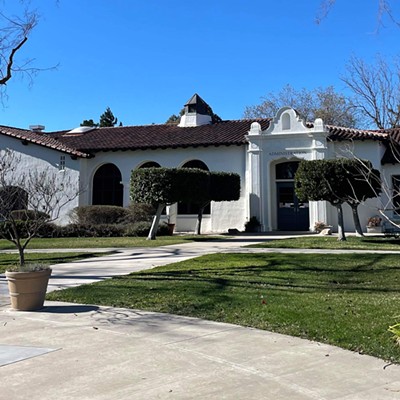An independent study is attempting to dust off an image of the Oceano Dunes’ future should off-road vehicle (OHV) use be permanently reduced or stopped at the state park.
Called the Oceano Dunes Stewardship Study, the 105-page document released on June 1 detailed 20 recommendations as a blueprint for prospective development, management, and promotion of the dunes and its neighboring areas. Those suggestions include creating a stewardship committee, expanding trail systems and walkways, developing new event venues, and improving education about the dunes. Once pursued, the recommendations are expected to take between one and seven years to actualize.
Marketing organization Visit SLO CAL and tourism and economic development advisor Resonance created the $87,500 study with the help of more than 40 stakeholders, including California State Parks, Northern Chumash tribal leaders, and representatives from municipalities like Grover Beach, Arroyo Grande, Pismo Beach, and the Oceano Community Services District.

The study is a response to the California Coastal Commission’s March 2021 decision to end OHV use at the Oceano Dunes State Vehicular Recreation Area by 2024. The call to phase out vehicles on the dunes resulted in a cluster of litigation, which stem from contentious debates on the alleged threat OHV use poses to dust mitigation efforts and the environment.
Attracting visitors to the Oceano Dunes is lucrative. According to the study, spending by visitors from outside SLO County to the dunes generated a total economic impact of $511.2 million in 2019. The study focused on that year as a pre-pandemic snapshot. Resonance President Chris Fair told the Sun on June 26 that the organizations could track the economic impact over 2019 and 2023 next year.
He said that work on the study began last fall, and carrying out its recommendations hinges on the court’s rulings on the plethora of lawsuits.
“It’s up to the stakeholders now,” Fair said. “No one group or party is responsible for all the recommendations. State Parks, Grover Beach, Oceano, Visit SLO CAL, and the county all play a role.”
Grover Beach, for example, contributed $5,000 in funding to support the study, according to City Manager Matthew Bronson. He added that the county and the cities of Arroyo Grande and Pismo Beach provided a similar level of funding. Grover Beach officials are still reviewing the study for recommendations that best apply to the city, but they have preliminary ideas.
“One example is the completion of the Grover Beach Lodge private development project at Pismo State Beach, which is referenced as an example of the ‘Diversify Accommodations’ recommendation,” Bronson said. “This hotel project is key to further developing the Grand Avenue beachfront entrance to the Oceano Dunes area.”
The focus on diversity in the study was lauded by the Sierra Club, too. Santa Lucia chapter Director Andrew Christie applauded the study’s recognition of implementing “non-OHV scenarios” for the Oceano Dunes.
“We fully agree with the study’s finding of a lack of diversity in State Parks’ concessionaire agreements and suggestion that they need to open it up to more non-OHV concessions,” he said via email.
However, Christie said that the Santa Lucia chapter also foresees a potential problem in the research: the suggestion that the Coastal Commission only get involved at the very end for approval of the proposed Stewardship Committee’s plans for carrying out concepts in the study. The committee, according to Christie, should engage the commission much sooner in the planning stage.
He mentioned that such a process brings the likelihood of the Stewardship Committee only realizing “a few million dollars later” that additional development projects are inconsistent with the local coastal program, and that the coastal commission must be involved sooner in the planning process.
“Here’s a tip for the South County chambers and city councils: Consult directly with the Coastal Commission as early and often as you can in the course of your planning process, not at the end,” Christie said.
Christie also took umbrage with the study’s suggestion of including “environmentally friendly OHVs” in the future. He called the phrase an “exercise in cognitive dissonance.”
“If this is a reference to electric OHVs, that would solve neither the dust problem nor the sensitive species and habitat destruction problem,” Christie said. “The primary damage to the dunes is done by the movement of the vehicles, not what comes out of their tailpipes.”












